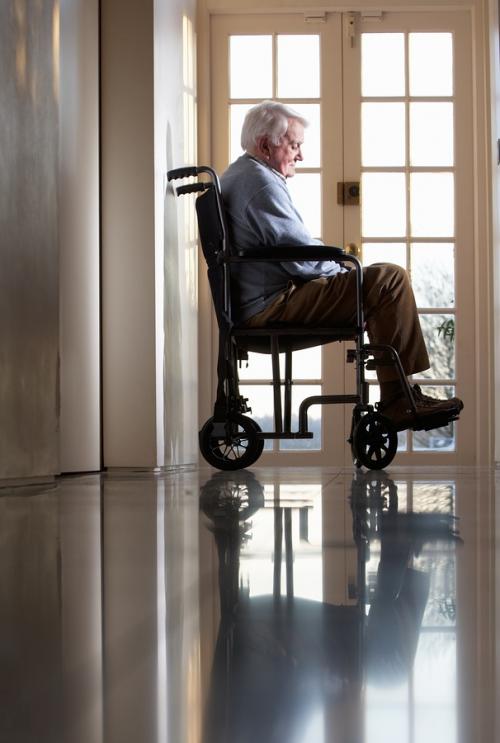After millions of COVID-19 vaccinations were given to residents and employees of nursing homes, the federal government is now promoting personal visits to nursing homes. On March 10, 2021, the Centers for Medicare & Medicaid Services (CMS) updated their facility guidelines for in-person visits. It is important that the updated memorandum, QSO-20-39-NH revised (“CMS Memo”) contains revised guidelines on indoor visits, indoor visits during an outbreak, core principles of COVID-19 infection prevention, outdoor visits, visitor testing and vaccinations, and compassionate care visits.
Indoor visitation & indoor visitation during an outbreak
The most important aspect of the new guidance concerns indoor visits and indoor visits during an outbreak. Nursing homes should allow indoor visits at any time and for all residentsexcept for a few limited circumstances. Indoor visits should be limited to:
Unvaccinated residents if the nursing home’s COVID-19 positivity rate in the nursing home is greater than 10% and Less than 70% of the facility’s residents are fully vaccinated.
Residents with confirmed COVID-19 infection, whether vaccinated or not, until they meet weaning criteria Transfer Based Precautions to the CDC manual.
Residents in quarantine, whether vaccinated or not, until they meet the criteria for release from quarantine.
Although CDC and CMS recommend facilities, local residents and families practice social distancing. When a resident is fully vaccinated, the resident can “choose to have close contact (including touch) with their visitor while wearing a well-fitting face mask and performing hand hygiene before and after. “
When a COVID-19 case is discovered in a nursing home, other residents and employees are often infected. Accordingly, a single new COVID-19 case among local residents or employees is viewed as an outbreak. The CMS instructions provide that “[w]If a new case of COVID-19 is detected among residents or employees, a facility should immediately begin outbreak testing and suspend all visits (except those required under Federal Disability Rights Act) until at least one Round of facility-wide testing is complete. “However, the facilities can resume the visit in the following situations:
If no additional COVID-19 cases are detected in other areas (e.g. units) of the facility in the first round of outbreak testing, the visit may continue for residents in areas / units with no COVID-19 cases. However, the facility should suspend the visit to the affected unit until the tests have not detected any new cases of COVID in employees or residents since the last positive result – the criteria for discontinuing outbreak testing – for at least 14 days.
If, in the first round of outbreak testing, one or more additional COVID-19 cases are detected in other areas / units of the facility (e.g. new cases in two or more units), the facilities should make the visit for all residents (vaccinated and not vaccinated) until suspend Facility meets criteria to abandon outbreak testing.
While the above shows that the visit can continue during an outbreak, facilities should be confident to continue all rounds of outbreak testing. In addition, visitors should be made aware of the potential for COVID-19 exposure at the facility through appropriate signage or other means.
Further important information on facilities to be considered
By now, the general population is familiar with CDC guidelines on reducing the risk of COVID-19 transmission (e.g., wear a face covering or mask, maintain a social distance of at least 6 feet, and practice hand hygiene). In addition to complying with these guidelines, facilities should ensure that all persons entering the facility are screened for signs and symptoms of COVID-19 (e.g., temperature tests, questions about, and observation of signs or symptoms). Facilities can then refuse entry to people with signs or symptoms. However, the updated CMS memo now recommends that facilities refuse access to anyone who has been in close contact with someone with COVID-19 infection in the past 14 days (regardless of the visitor’s vaccination status).
Visits outdoors generally have a lower risk of transmission. Therefore, facilities are instructed to conduct outdoor visits whenever practicable, even if the resident and visitor are fully vaccinated. Of course, a resident’s health or weather conditions (e.g., freezing temperatures in Wisconsin or blazing temperatures in Florida) may prevent outdoor visits. As COVID-19 vaccinations continue to be available to more members of the public, facility visitors are encouraged to get vaccinated on occasion. However, an institution cannot require visitors to be tested or vaccinated (or provide evidence of such evidence) as a condition of the visit.
Finally, according to the updated guidelines, Compassionate care visits should “be allowed at all times, regardless of a resident’s vaccination status, county COVID-19 positivity rate, or an outbreak. As mentioned above, the resident can choose to have close contact with their visitor as long as the resident is fully vaccinated. While compassionate care situations are often believed to apply to end-of-life situations, it is important for institutions to consider other situations that are consistent with the intent of compassionate care situations.
Conclusion
Federal law prohibits an institution from restricting visits without a reasonable clinical or safety reason. 42 CFR § 483.10 (f) (4) (v). Therefore, it is important for nursing home institutions to carefully review and apply the guidance contained in the updated CMS memo.
© 2020 Davis | Kuelthau, sc All rights reservedNational Law Review, Volume XI, Number 74

